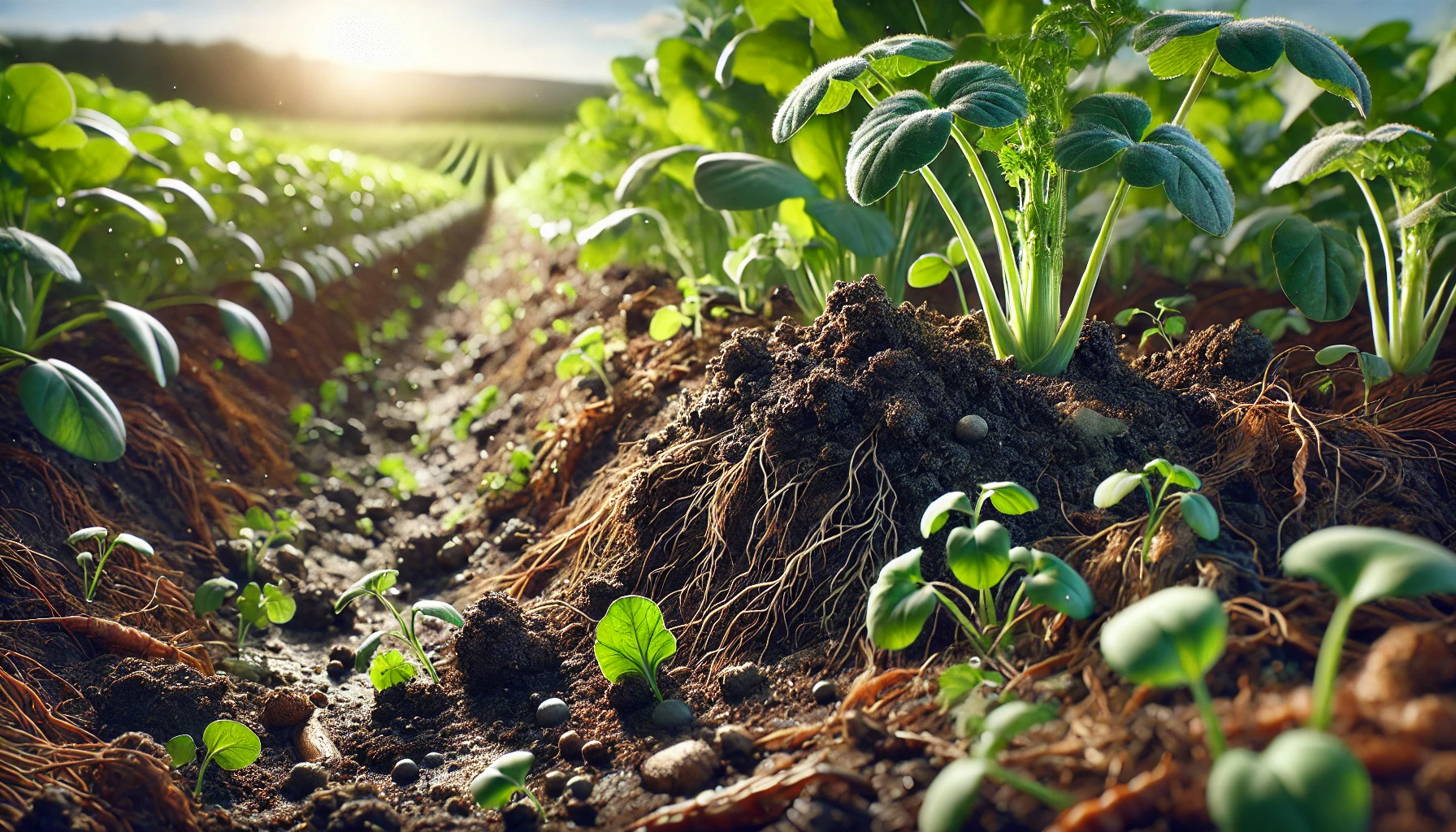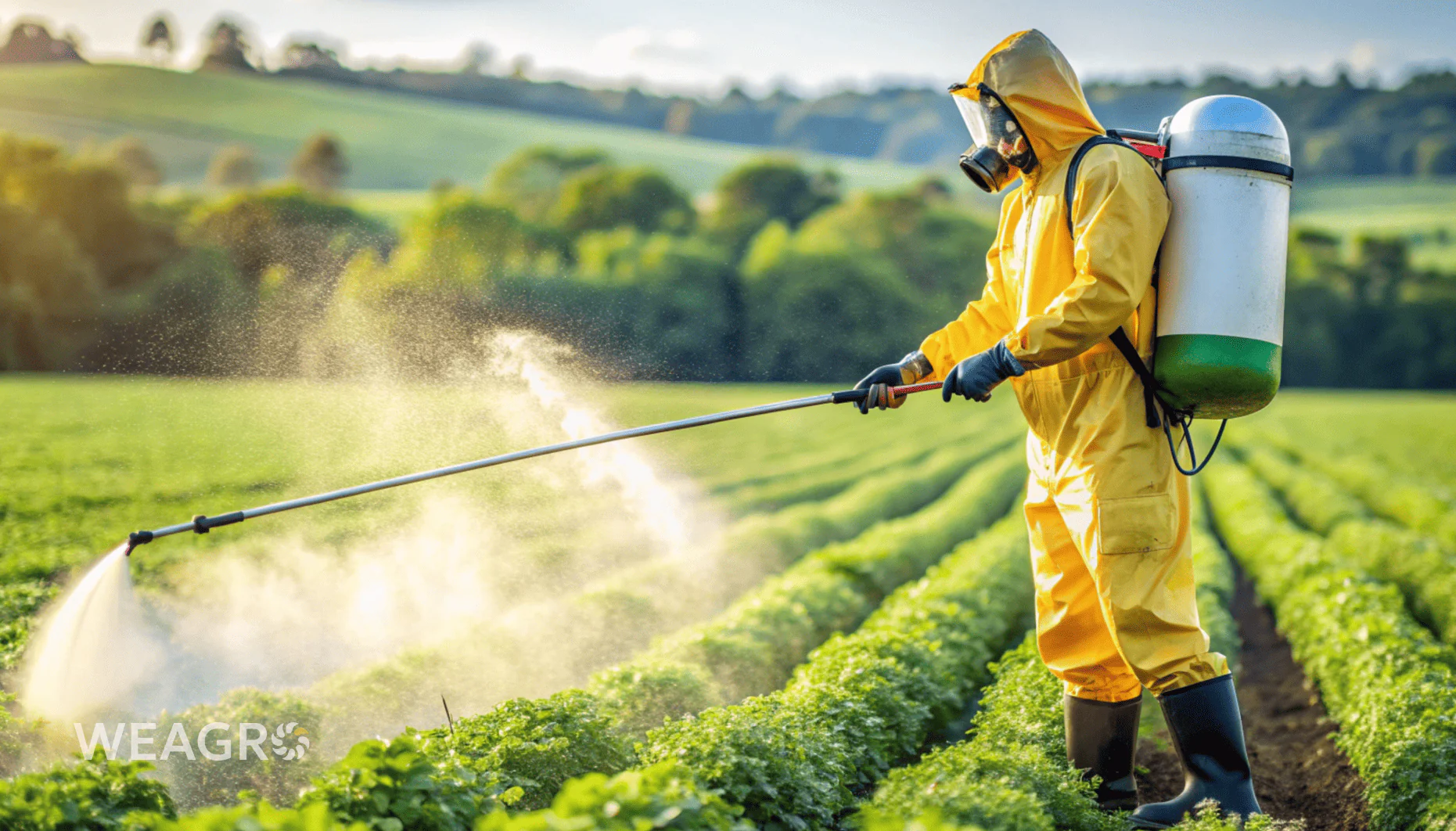Green trends in agriculture remain relevant. One popular solution is organic fertilizers. This is an investment in future development that fully justifies all efforts. According to statistics, the trend is positive: transitioning to this nutrition system when growing corn achieved a profitability rate of 38.51%. Currently, the global fertilizer market has reached $192.56 billion USD, but by 2030 this figure could grow to $250 billion. Where the organic share is $12.64 billion.
What are Organic Fertilizers
Natural substances used to improve soil fertility and plant nutrition can be obtained from plant or animal sources, as well as industrial waste. The main difference and advantage of organic fertilizers is the absence of synthetic chemicals. The natural composition allows plants to receive necessary nutrition, thereby increasing crop volume and quality. This is an integral part of sustainable agriculture that is in demand for many reasons:
- do not pollute the environment with chemical compounds;
- decompose naturally;
- effectively restore depleted soils;
- increase the ability to retain moisture and nutrients;
- promote an increase in beneficial microorganisms.
What qualifies as organic fertilizer? These are natural, organic compounds containing carbon molecules. They include various types of compost, humus, green manure and many other components. Unlike mineral fertilizers, which gradually destroy soils through excessive compaction and reduced porosity, natural substances are a source of beneficial and nutritious elements that provide positive comprehensive effects.
Read also: How to Determine Soil Acidity and How to Lower or Increase It
Advantages of Organic Fertilizers

The use of safe substances for plant nutrition and field fertility improvement allows maintaining ecosystem balance and is an important contribution to long-term soil health considering future prospects. Organic fertilizers are the path of modern farming, popular due to numerous advantages:
- Environmental friendliness — no harm to plants, water resources and the environment.
- Soil structure restoration — improve drainage and aeration, helping roots develop better, and increase agricultural land resistance to erosion and weathering.
- Long-lasting action — nutrients are released gradually over an extended period of mineral fertilizer decomposition, allowing plants to receive necessary nutrition without risk of overdose and root damage when established norms are followed.
- Humus formation — animal and plant organic residues not only improve fertility but also increase soil water retention capacity, which is especially important during drought conditions.
- Product safety — when growing vegetables and fruits, it is important not to use synthetic chemicals and strictly follow norms for organic fertilizer application.
Among the advantages, the cost-effectiveness of this type of fertilizer should also be highlighted. Compared to mineral mixtures, with the same amount of nutrients, the price will be significantly lower. The difference can reach 4-10 times. For agricultural sector representatives, a beneficial agricultural installment plan has been developed, allowing purchases of everything necessary on favorable terms. The online service WEAGRO offers the opportunity to purchase products from reliable partners with payment deferral up to 180 days, so all necessary components can be applied on time, and payment for purchases can be made gradually.
Disadvantages of Organic Fertilizers
Despite all the advantages, there are certain disadvantages that must be considered:
- Low concentration of beneficial substances compared to chemical mixtures — large volumes will be needed to provide plants with necessary elements. This somewhat increases time and effort costs, and complicates storage and transportation.
- Slow action — do not expect immediate effects, this is an investment in long-term perspective, not quick results.
- Potential presence of pathogens — improper use can lead to disease spread among plants, so organic fertilizer application must be performed strictly according to instructions corresponding to the chosen type of substances and soil needs.
It is important to use only quality products that are free of stones, twine or other large residues that could cause agricultural equipment failure and soil contamination. But with a responsible approach to this issue, the benefits and advantages significantly outweigh the existing disadvantages.
Types of Organic Fertilizers
Natural plant growth stimulators are quite numerous and diverse. Depending on soil analysis results, needs of cultivated crops, and other factors, optimal organic fertilizers can be selected. Types are distinguished by origin: what substances form the basis of the natural additive designed to improve field fertility.
Plant-based Organic Fertilizers
This category is created from plant materials: leaves, stems, roots. Among the most common options:
- Compost. Created through decomposition of organic materials over several years. Used during planting and mulching. Average application volume — 4 kg per m². Recommended application frequency — every 2-4 years.
- Green manure. Green fertilizers grown for subsequent plowing into soil. These plants accumulate nitrogen and other beneficial elements in their tissues, which during decomposition enrich the soil and promote its restoration, and also reduce erosion.
- Ash. Product obtained from burning wood or dried grass residues. Distinguished by high content of microelements, potassium, calcium and phosphorus, which effectively reduces acidity. But does not contain nitrogen, so before application it is necessary to select types of organic fertilizers with high content of this component for their joint application. Rate — up to 1 kg per 10 m².
- Peat. Composition formed as a result of plant residue decomposition under excessive moisture conditions. Exists in three types: high-moor — very acidic, low-moor — neutral or slightly acidic, transitional — average indicators between high-moor and low-moor. Is a source of humic acids that stimulate plant growth and increase their disease resistance.
Crushed wood — sawdust or bark — can also be used as plant fertilizers. But only in combination with other materials and after a long rotting process — identical to composting.
Animal-based Organic Fertilizers
The most effective and efficient, and therefore popular additives. Created from livestock waste, rich in three key elements necessary for plant health and intensive growth — nitrogen, phosphorus and potassium. Among them:
- Poultry manure. Chicken, pigeon, duck or goose. Ideal for autumn application in liquid form: solution is diluted with water at 1:1 ratio, infused for about 5 days, diluted again 1:10 and evenly distributed across the field.
- Bone meal. Ground cattle bones. Favorably affects the root system and provides long-term plant nutrition.
- Manure. Mixture of dung and bedding material that goes through up to four decomposition stages. At the fourth — final — stage it transforms into black mass, and at the stage of transformation into humus, becomes loose and acquires earthy color. This is one of the most valuable fertilizers that can be applied both in spring and autumn, mainly in the morning or evening during hours of least solar activity.
Understanding what animal-based organic fertilizers are, and most importantly, how to use them correctly, provides the opportunity to select optimal components for enriching fields with valuable substances and microelements. And increased yield will justify the efforts made.
Organic Fertilizers from Industrial Waste
This category is somewhat similar to previous points — it includes plant-based components formed as a result of waste from food, wood and other industrial sectors. Organic fertilizer examples:
- compost from food waste;
- processed wood waste;
- wood ash.
A separate category — vermicompost. This is an eco-trend of recent years in agriculture: earthworms transform waste into high-quality fertilizer that has comprehensive action.
Organic Fertilizer Application Technologies
There are various methods adapted to different soil types and agricultural crops. One of the most common options is surface distribution with subsequent plowing into soil, which helps evenly distribute nutrients and prevent their leaching. Composting is also popular for creating a nutrient-rich layer on the soil surface.
Local organic fertilizer application involves distribution directly into planting furrows, thereby minimizing losses of valuable components. For precise dosing and even distribution, it is rational to use agricultural machinery.
Read also: Soil: What It Is, Types, and Its Fertility
Organic Fertilizer Application Rates
Before purchasing natural components to improve soil characteristics and plant nutrition, it is useful to conduct all necessary analyses — this will help determine precise dosing of certain substances relevant for a specific field. But basic recommendations can also be used as guidance: organic fertilizer application rates per 1 hectare are presented in the table.
| Fertilizer type | Row crops | Grain crops |
| Poultry manure | 10-40 tons | 5-20 tons |
| Pig manure | 30-150 tons | Maintains effect in the second and subsequent years of application, only in aftereffect is application of 60-100 tons permissible |
| Cattle manure | 40-150 tons | Maintains effect in the second and subsequent years of application, only in aftereffect is application of 60-100 tons permissible |
Farmer Advice on Using Organic Fertilizers
Transitioning to using natural components for plant nutrition is an investment in future results that will later be reflected in agricultural product quality. For this category of fertilizers to be effective and safe, it is important to follow these rules:
- soil analysis — determining actual need for specific substances;
- dosing — following basic recommendations to avoid oversaturating soil and harming plants;
- choosing the right type — considering the specifics of cultivated crops.
Applying organic fertilizers every 2-4 years will help maintain biological diversity. Most often this is done in autumn, but spring field nutrition is also acceptable. All this allows improving soil condition, and implementing advanced digital technologies will help optimize fertilizer application processes and increase overall farming efficiency. And for purchasing necessary agricultural machinery, tools and related products, you can use the agricultural installment plan from the online service WEAGRO on favorable terms.









